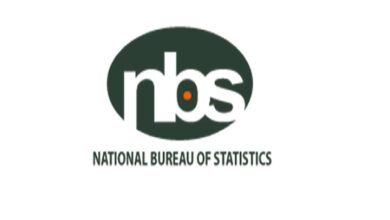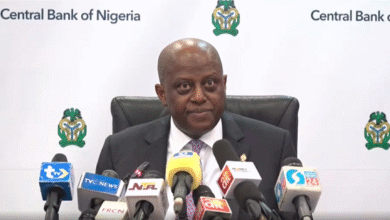Can Adebise Lift Wema Bank Off the Treadmill ?

Wema Bank PLc was not only a household name but highly competitive some decades in the past ; it delivered competitive values to its shareholders . However, this is no longer the case or with the usual intensity ; though ,it remains a going concern and able to sustain its survival with profitability ,it has been pushed to back seat and now a shadow of its former self in terms of critical performance indicators .The cause of some worries ,moreover , is that despite frantic efforts in the last few years to restore its glorious years and ensure its competitiveness ,Wema Bank Plc ,one of the oldest banks in Nigeria ,remained in laggard mode for years, at least , when benchmarked with its competitors in the industry .
What is the genesis of this bank’s competitive debacle and who will bail it out ? These are the recurring critical questions from its investors whose answers have remained elusive .However ,for those with the knowledge of the importance of a company with the power of creating the future as well as the danger of a company protecting the past more than creating the future , the reason for Wema Bank’s current unenviable or less competitive status ,may not be far to seek .
Several managements consultants had raised alarm on the danger of this negligence. One of the biggest lessons or warnings taught by authors, Gary Hamel and C.K. Prahalad in their book , Competing For the Future dwells heavily on this issue . According to them ,”the degree of energy deployed by any company to preserve the past or to create the future underpins how far it goes in a race for an industry leadership . The authors noted, if any company mostly protect the past at expense of creating the future ,its position is on the treadmill .
Wema Bank ,no doubt ,is a victim of the above laxity . Picture it ,if you can, Wema Bank is a mirror image or a facsimile of a company that protects its past more than it is creating the future for lack of foresight and creatively on the part of its past leadership .Sequel to this it has become a victim of this managerial negligence or error of protecting the past mostly than creating the future; the bank has remained more conventional and reactive but less distinctive and far-sighted , embarking mostly on reengineering core processes and operational efficiency than regenerating core strategies , mostly a rule-taker than a rule-maker ; its advantage-building efforts is focused mostly on catching up than building advantages new to the industry; its transformation agenda been set by competitors’ actions rather than being set by its own unique vision of the future ; its senior managers ,are more maintenance engineers working on the present than architects designing the future , and among its employees ,it is more of anxiety than hope.
The consequence of the above less inspiring positioning had been enormous for Wema Bank and the symptoms are crystal clear : its foundation of the past had shaken and fractured as the industrial terrain changed shape faster than the top management could refashion its basic beliefs and assumptions on which markets to serve ,which technologies to master ,which customers to serve and how to get the best out of employees. Despite being one of the oldest banks in Nigeria it has remained on a treadmill, trying to keep one step ahead of the steadily declining margins and profits of yesterday’s businesses.”.. The fact remains that when buffeted by above forces only few are seem to be in control of their own destiny; for this , it has remained a threshold player when benchmarked with its competitors despite some impressive performance of its historical indicators displayed by its last year results .
When a company protects its past than creating the future ,this current fate may not be farfetched. Gary Hamel and C.K. Prahalad ask , if it’s not the future, just what is occupying senior management’s attention? In two words—restructuring and reengineering , they answer , is the next course of action ; restructuring comes under different names like refocusing, delaying, decluttering, and right sizing ; when the above become inescapable most executives pick up the knife and begin the brutal work of restructuring with a goal to carve away layers of corporate fat ,jettison underperforming businesses and raise the asset productivity. Some analyst believed such steps are usually to save their jobs as other executives that don’t find room for such an emergency surgery usually loose their jobs . The successive management of Wema Bank should blamed for their ineptitude that made the bank a bystander and not a driver on the road to the future, a situation that made its structure, values and skills progressively less attuned to an ever changing industry reality.
Wema Bank embarked on restructuring and reengineering when confronted with the competitive battle against stagnant growth, declining margins and falling market share .This is what successive leadership of Wema Bank has been doing as the discrepancy between the change in the pace of industry environment and pace of change in the internal environment brought out and spawned the daunting task of organization transformation variously tagged downsizing ,overhead reduction, employee empowerment, process redesign and portfolio rationalization. .
This is not to condemn restructuring and reengineering as strategic initiatives out rightly . Downsizing and core process redesign , synonyms of restructuring and reengineering ,are legitimate and important tasks .However , these two concepts have their strengths and weaknesses. They have more to do with shoring up today’s businesses than creating tomorrow’s industries ,but neither is a substitute for imagining and creating the future nor will they ensure continued success if a company fails to regenerate its core strategies. One thing with reengineering is that though it offers at least the hope, if not the reality, of getting better as well as getting smaller while any company that is more successful at restructuring than reengineering will become smaller faster than getting better .By this position is unenviable because a company surrenders today’s businesses when it gets smaller faster than it is getting better; the one that surrenders tomorrow businesses, gets better without getting different. Any company that succeeds at restructuring and reengineering, but fails to create the markets of the future, will find itself battling with the above competitive problems . Moreover , none of the two gives industry leadership, which every company must aspire to attain. .Finally , while those initiatives are important, they cannot restore a company to industry leadership nor ensure its interception of the future .
The above weak points of those strategic choices keep have continued to keep Wema Bank down . A look into the bank’s results in the past few years confirmed the above view as much .Though the bank is making some frantic efforts to be competitive , but when a searchlight is beamed at its position in the industry ,it remains almost mostly uninspiring player by every available performance indicator till today .
When Wema Bank is benchmarked with others, particularly tier 2 banks , it remains a threshold bank in terms of resources and generates almost the worst competitive value for its investors . At the end of 2021 financial year its gross earnings was N93.63b, profit after tax N8.93b ,total assets N1.175trn, shareholders funds N70.146b ,customers deposit ,N968.171b ; Net loans and advances ,N418.9b ,costs of funds ,4.0%, and cost to income ,78% .With these figures in terms of resources and profitability , the only bank it can boast to be better than is Unity Bank and this one is almost in comatose.
Even its valuation ratios were the worst with a price earnings ratio at 0.04 making it more expensive than its peers without the fundamentals to support ; this is just as its beta at 1.02 displays its stock high volatility . However, its net interest margin and returns on equity are the two performance indicators of raised hope for investors and gave it strength among tier 2 banks ,but these could still be faulted ;the bank’s net interest margin at 6.40 % which would have given it a consolation prize is rubbished by its massive cost to income ratio that frustrated its bottom line to give it poor net profit margin ; even its return on Equity at 13.34% is suspicious as it driven by its larger debt than equity in 2021 ; its debt to equity ratio is 95.1%..
But who is to be blamed for the problem of Wema Bank ? Is the bank handicapped by its resource level or managerial ineptitude ? .Mixed reactions have continued to trail the fate of this bank . To some analysts, viewing the bank from its relatively meager resource base ,to attribute the above less inspiring performance profile to its resource level may not be farfetched. . Its balance sheet position as at half year 2022 indicates total assets N1.32 trn ,13% increase compared to N1.16 trn in the corresponding period of 2021 while its shareholder funds stood at N72.58b as against N70.36b ,an increase of 3% . Despite ,the increase in its asset volume ,when benchmarked with its rivals , it is still relatively resource disadvantaged . The argument is that threshold resources may behold a threshold performance.
However , a more convincing argument is that the uninspiring performance of Wema Bank could be more situated on its poor leadership . This view may be unassailable. While the positive or competitive advantage of size could not be disputed, there are so many examples of companies that overcame seemingly insuperable resource handicaps and built positions of global leadership. Moreover, just as bigness without stretch and leverage is obesity, smallness without stretch and leverage is impotence. Strategic experts equally are not oblivious of the fact that it is not necessarily the size of resources that matters as foresight, stretch, and leverage provide the energy and rationale for proactive advantage building and industry re-engineering.
Remaining smaller , faster and better are not enough. Though these are important, but a company must be capable of fundamentally re-conceiving itself, of regenerating its core strategies and of reinventing its industry; it must be capable of getting different.
Instead of the above initiatives , in a bank like Wema Bank ,the urgent drives out the important while the future goes largely unexplored; and the capacity to act, rather than the capacity to think and imagine, becomes the sole measure of leadership. Moreover , when a company fails to regenerate its core strategies or only succeeds at restructuring and reengineering, but fails to create the market of the future , it becomes herculean to tackle those challenges successfully .
Wema bank has remained unfortunate to get the right leadership that could engender its turnaround due to the above lapses .The fact remains that people are at the heart of strategy .The knowledge and experience of people can be the key factors enabling the success of strategies ; what those attributing the threshold performance of a bank like Wema to its meager resources relative to its competitors fail to know is that possession of resources does not guarantee strategic success as strategic capability is essentially concerned with how these resources are deployed, managed ,controlled ; and in the case of people motivated to create competencies in those activities and business processes needed to run the business.
Does Ademola Adebise ,the incumbent CEO of Wema Bank, have the capability to lift it from the treadmill? Looking at the bank’s progress from its historical performance ratios one could say he has done well and the hope is bright . The bank’s share price current value confirms this assertion. WEMA BANK closed its last trading day as at last Tuesday, August 9, 2022 at N3.35 per share on the Nigerian Stock Exchange (NGX). It began the year with a share price of 0.72 NGN and has since gained 365% on that price valuation, ranking it third on the NGX in terms of year-to-date performance . Adebise himself , believed he has done wonderfully well and moved the bank forward .
Commenting on its Half Year ,2022 result, the Managing Director, Chief Executive officer of the bank, Mr. Ademola Adebise said “Our performance has shown strong and promising results in the second quarter. Customers have continually shown trust in our proficiency, innovation, and service delivery even as the market gets more challenging. That said, I am confident, that despite increased volatility and uncertainty, we will continue to scale up, maneuver the environment, creatively manage our resources, and drive long-term, substantial returns for shareholders.”
But there is no turnaround yet . Though the bank may be painting itself and management proactive and efficient using its usual historical ratios ,,when Wema Bank is benchmarked with others in the industry , it is obvious that it remains the worst bank after Unity Bank that has been operating with negative shareholders funds in the past few years . Looking at the above facts and figures from another angle and juxtaposing these with his views above may render his claims a mere empty chest beating ; the ceo has not changed the fate of this bank in any fundamental way that will position it for leadership in the near future ;the current leadership has not proved it has a different joker to move the bank from its threshold . .
In the face of insurmountable barriers built the big with unique resources and more efficient rivals , Wema Bank needs a strategic leader that could redraw the industry boundary so that what is now attractive lies outside the former barriers to turnaround this bank around .To do this , there is a need for radical shifting of the basis for competitive advantage in the industry or create entirely new industry space ideally suited to its strength ; there is a need to construct unique and inimitable competitive advantages ; the management must overturn the present order ,challenge the accepted practice ,redraw segment boundaries ,set new price performing expectations and reinvent the service concept .
Since a firm’s actual profitability is determined by its relative cost and differentiation advantages , Wema Bank needs a new leadership with foresight ,stretch and leverage as energy provider and rationale for proactive advantage building and reengineering.




